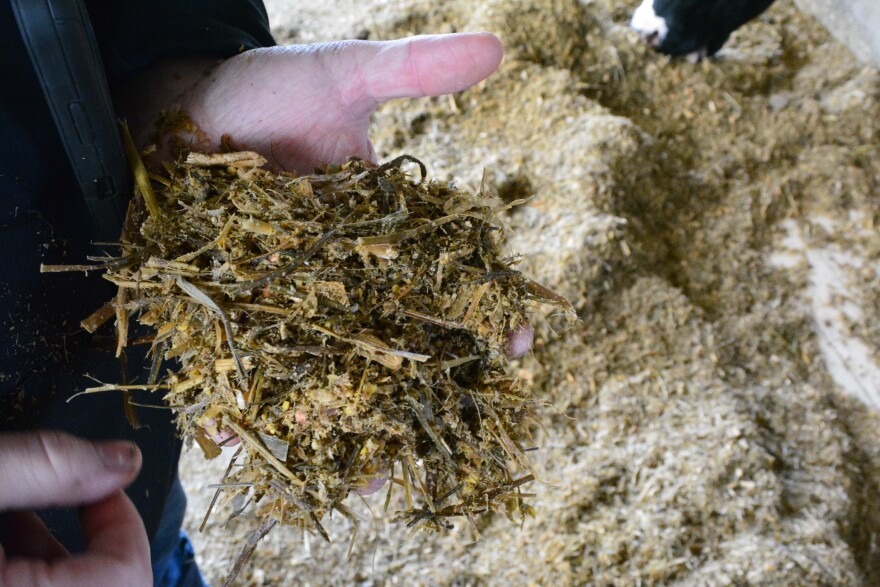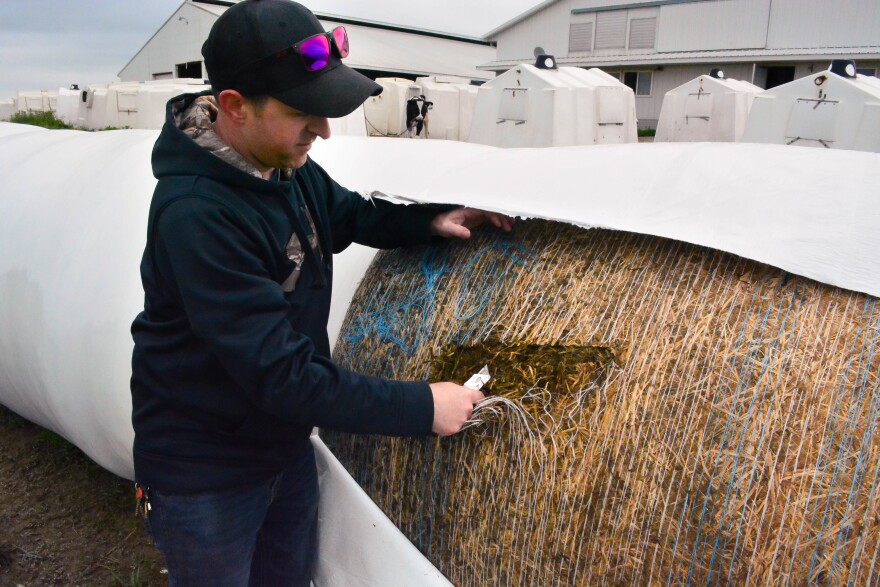The Kocher family has been farming the same plat of land near the northern Ohio village of Bloomville for generations. Among other crops, they grow alfalfa hay to feed their 700 dairy cows.
Ken Kocher says in nearly 50 years of farming, he’s never seen a winter wipe out 120 acres of hay.
“Never lost a crop over winter, never had any that froze out the whole crop," Kocher said. "But hopefully this is a once-in-a-lifetime, that it’ll never happen again. But we lost 120 acres."
It’s not something you see in the produce aisle or the meat case of the grocery store, but hay is a critical part of the agricultural marketplace.
Right now, Ohio is in the midst of a severe hay shortage largely driven by poor, wet weather conditions that started last summer. The price for a ton of high-quality, dry hay nearly tripled over the past year, forcing some farmers to turn to less-nutritious, more expensive alternatives.
Ty Higgins with the Ohio Farm Bureau says farmers are buying pricier grains like corn to feed their livestock.
“Where’s that money coming from, and how do you free up some of that budget? And sometimes that means liquidating some of your herd," Higgins said. "And so we could see farmers with lower numbers of head this year than we had last year simply because of the hay shortage.”

Another reason for the shortage is that in recent years, Ohio lost more than 100 hay farms to retirement and more profitable crops. Those lost acres make the hay market, which is primarily local, more susceptible to stresses like weather.
Allen Gahler is an alfalfa and cattle farmer in northwest Ohio, where he also works as an Ohio State University Extension educator. He says horses and dairy cows rely on good hay for their feed: Cows need hay with high nutritional content to produce milk.
That reliance, paired with an ongoing drop in milk prices, puts an added financial strain on dairy farmers.

“Horse markets will still maintain, I think, a good portion of those purchases, but dairies will not be able to compete with those prices, and we’re probably going to see it lead to the demise of more and more dairy farms," Gahler said.
After alfalfa is cut, it typically needs to dry for three to four days before it can be baled. But Gahler says starting in August, consecutive warm and sunny days were few and far between.
“All the way through the rest of the summer and early fall there was just so much moisture that it was very difficult to make dry hay and to make a high quality product," Gahler said.
Gahler says alfalfa fields have little insulation from top growth and snow cover to withstand freezing and thawing cycles. Bitter cold followed by up-and-down temperatures caused the ground to swell and pushed plants toward the surface.

The Kochers are lucky. They don’t primarily make dry hay. Instead, they leave a little moisture in the bales that are sealed in long plastic tubes to ferment. The hay only needs one or two dry days before it's ready to bale, and that shortened time frame means the Kochers didn’t feel the impact of last year’s wet summer. But it’s more expensive and requires special equipment.
The Kocher’s existing hay might be O.K., but they had no such luck for a new alfalfa crop planted last summer.
“It was beautiful, I mean, it was perfect as you can ask for, and you know, I would call that roughly a 100% stand, and now I don't know if it’s 30% stand," says Adam Kocher.
Though they have tons of hay leftover from previous years, the Kochers are still cutting the amount of alfalfa they use in their feed, substituting corn silage instead.

Ken Kocher plans on planting a crop called Sudan grass as a rescue this year. But he says he loves growing alfalfa and hopes to go back to it next summer. He thought about doing a spring planting of alfalfa, but this spring continues to be soggy, and alfalfa typically doesn’t yield a large crop during its first year, anyways.
“The main gift would be weather. You’ve got to have the weather," Kocher said. "It seems like the last few years, we’re always fighting the weather.”





